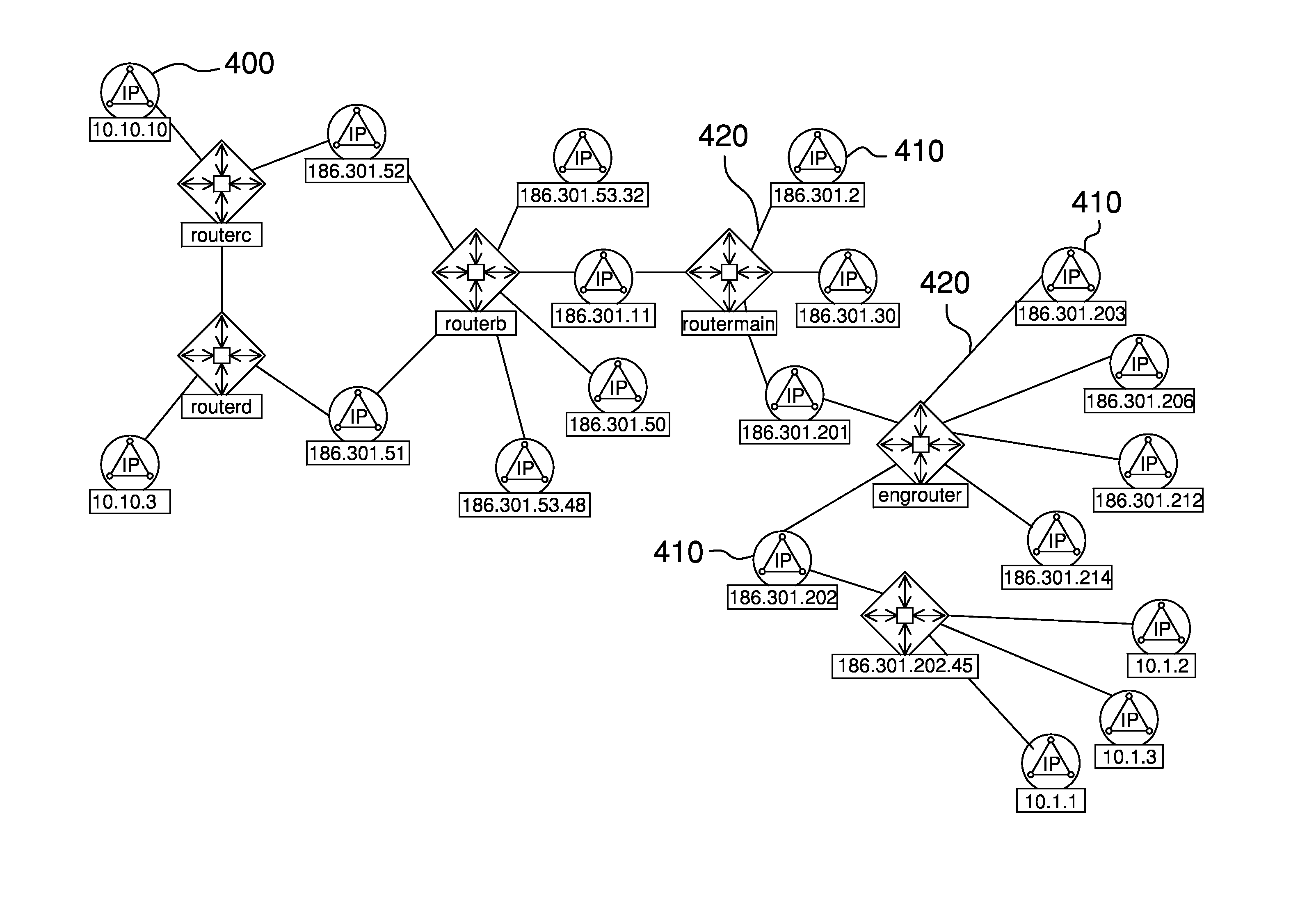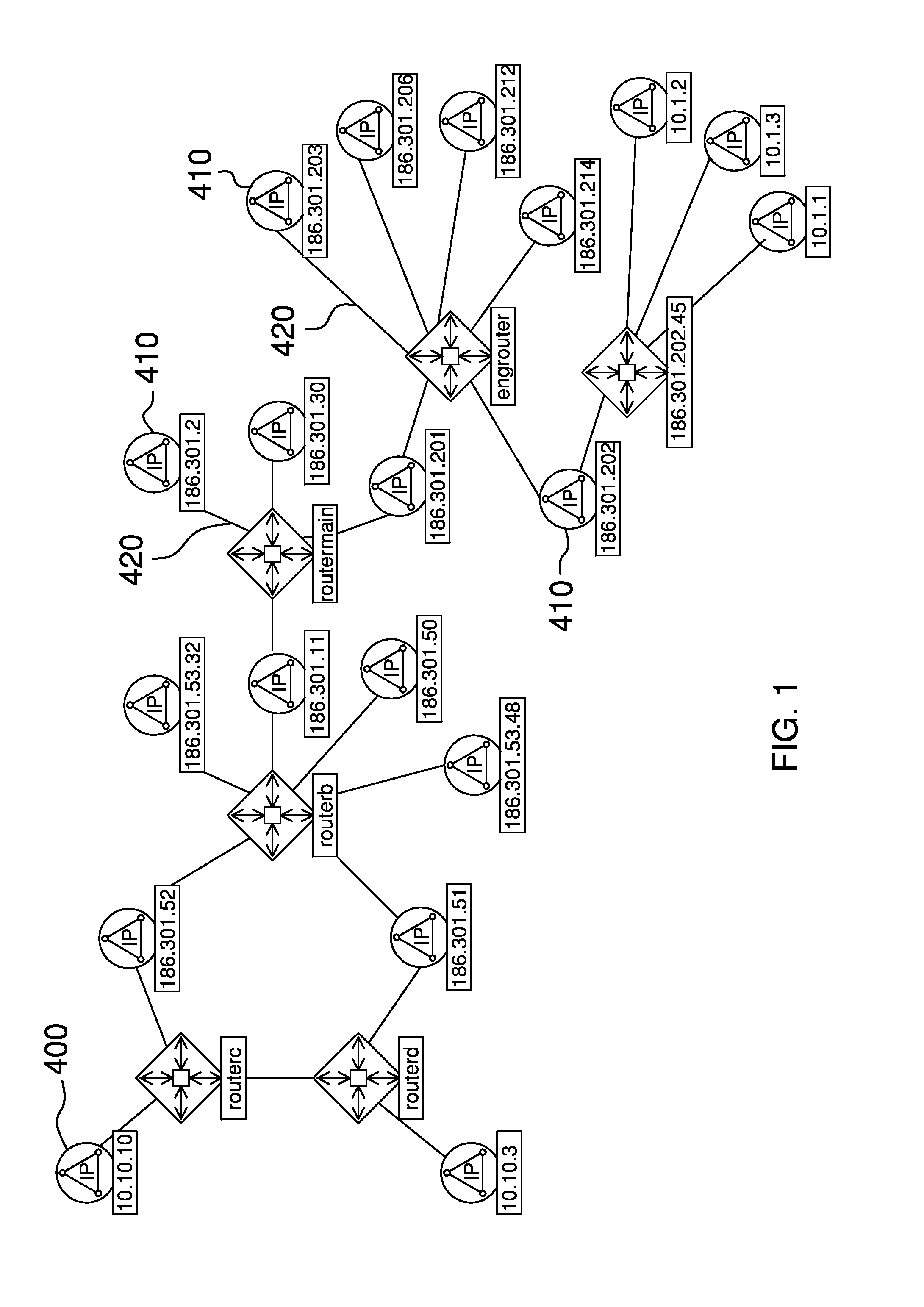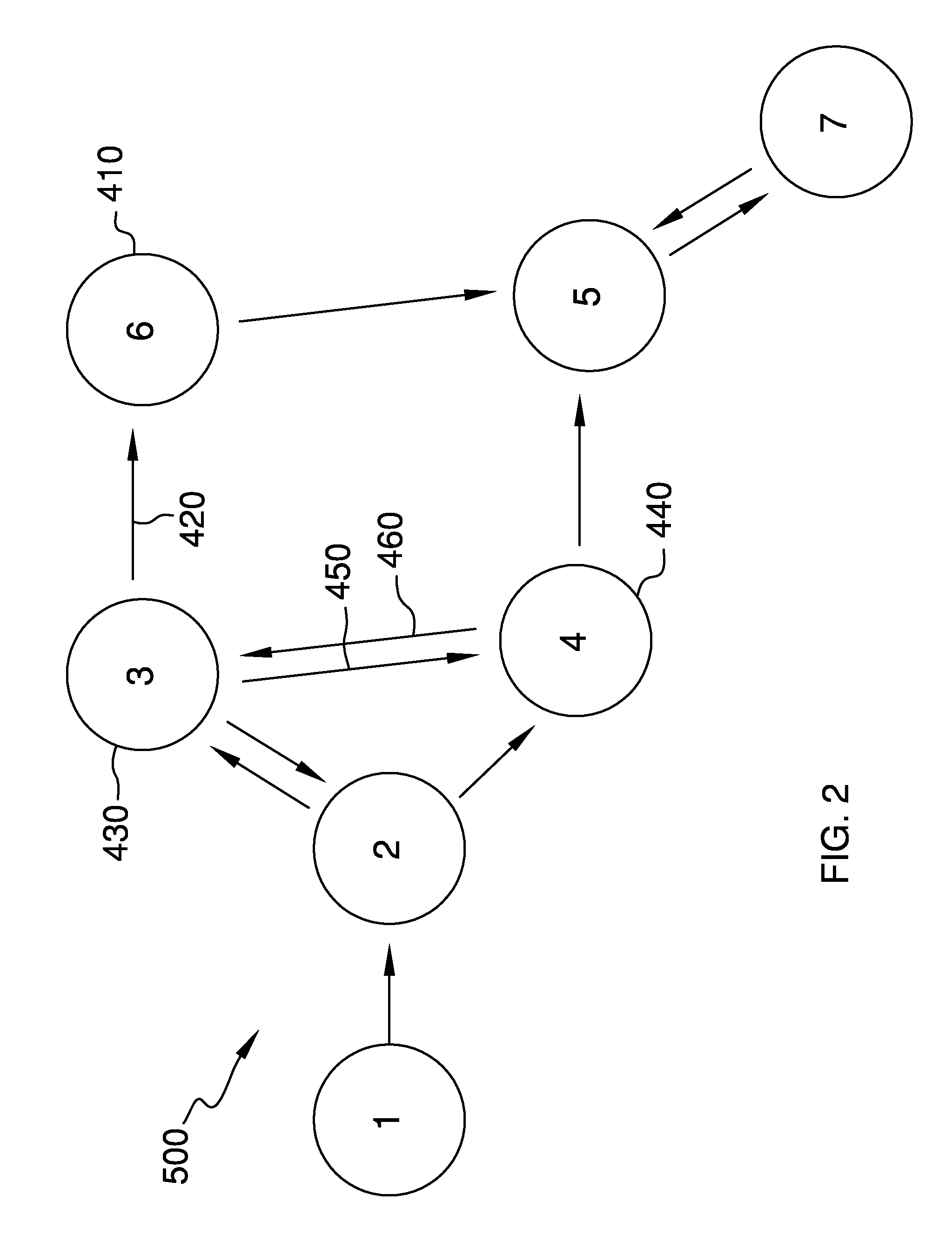System and method for network service path analysis
a network service and path analysis technology, applied in the field of system and method for network service path analysis, can solve the problems of limited service management approaches in information technology, inability to fully understand how specific applications are applied, lack of configuration standards, etc., and achieve the effect of reducing the size of the s
- Summary
- Abstract
- Description
- Claims
- Application Information
AI Technical Summary
Benefits of technology
Problems solved by technology
Method used
Image
Examples
Embodiment Construction
[0042]The principles of the present invention are applicable to a variety of computer hardware and software configurations. The term “computer hardware” or “hardware,” as used herein, refers to any machine or apparatus that is capable of accepting, performing logic operations on, storing, or displaying data, and includes without limitation processors and memory; the term “computer software” or “software,” refers to any set of instructions operable to cause computer hardware to perform an operation. A “computer,” as that term is used herein, includes without limitation any useful combination of hardware and software, and an “application,” a “computer program,” or “program” includes without limitation any software operable to cause computer hardware to accept, perform logic operations on, store, or display data. A computer program may, and often is, comprised of a plurality of smaller programming units, including without limitation subroutines, modules, functions, methods, and procedu...
PUM
 Login to View More
Login to View More Abstract
Description
Claims
Application Information
 Login to View More
Login to View More - R&D
- Intellectual Property
- Life Sciences
- Materials
- Tech Scout
- Unparalleled Data Quality
- Higher Quality Content
- 60% Fewer Hallucinations
Browse by: Latest US Patents, China's latest patents, Technical Efficacy Thesaurus, Application Domain, Technology Topic, Popular Technical Reports.
© 2025 PatSnap. All rights reserved.Legal|Privacy policy|Modern Slavery Act Transparency Statement|Sitemap|About US| Contact US: help@patsnap.com



